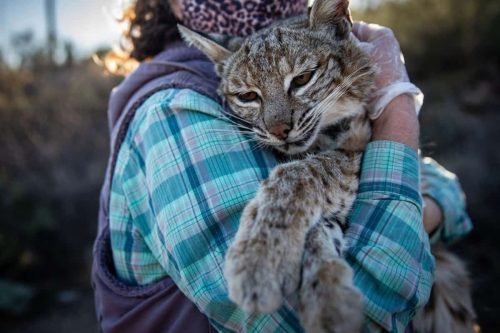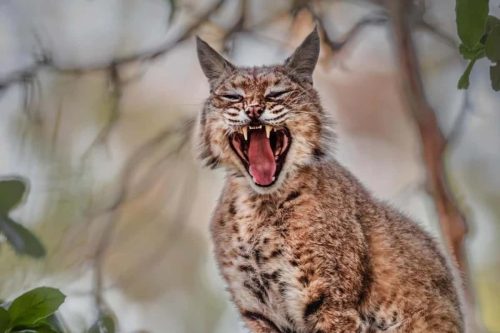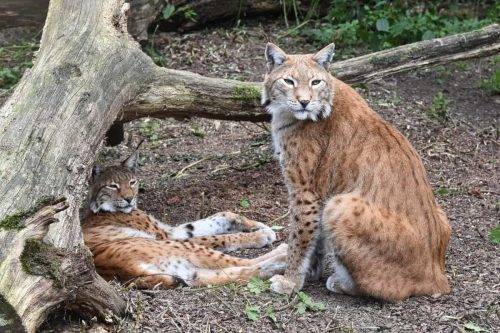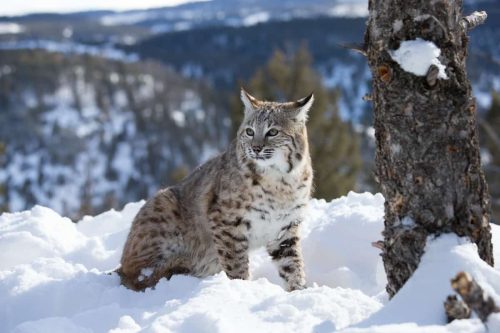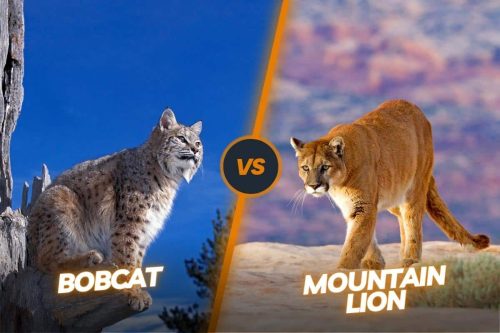How to Trap a Bobcat: a Quick & Easy Guide for Catching Bobcats
Bobcats might not be as problematic as other wild animals could be. Still, there are many problems which are associated with the presence of bobcats in any area. Bobcats are considered the best hunters of feline members. However, if these animals are living close to urban or suburban settings, these animals create a lot of problems for human beings and domestic animals.
First of all, these cats are small mammals in their local habitat. But these wild cats could also target pet animals and defenseless children if they are facing food scarcity in their local areas. In this case, you need to trap or catch these cats before these cats cause any damage to your property, pet animals, or children. In this article, we are going to explain in detail all the trapping methods which we can deploy for catching these cats. Let’s learn how to trap a bobcat.

Contents
Trapping A Bobcat – Step By Step
There are four steps for trapping bobcats in the best or ideal manner. Let’s have a look at these steps one by one.
1. Tracking a bobcat
First of all, you must track bobcats to know the exact location where these cats could be found. These cats could have their presence in a variety of areas due to extraordinary adaptabilities like forests, swamps, long grass, trees, bushes, cliffs, rocky outcroppings, and dry creek beds. You may also find these cats in abandoned buildings, grassy fields nearby, and rural and suburban areas where there is very less traffic.
After that, you must look for cat-like tracks. Once you know where the bobcats prowl usually, then you can set the trap more efficiently. These tracks would be larger than the tracks of domestic cats but smaller than the tracks of dogs and coyotes. You may have to search for very wide areas for locating these tracks as bobcats cover very large territories.
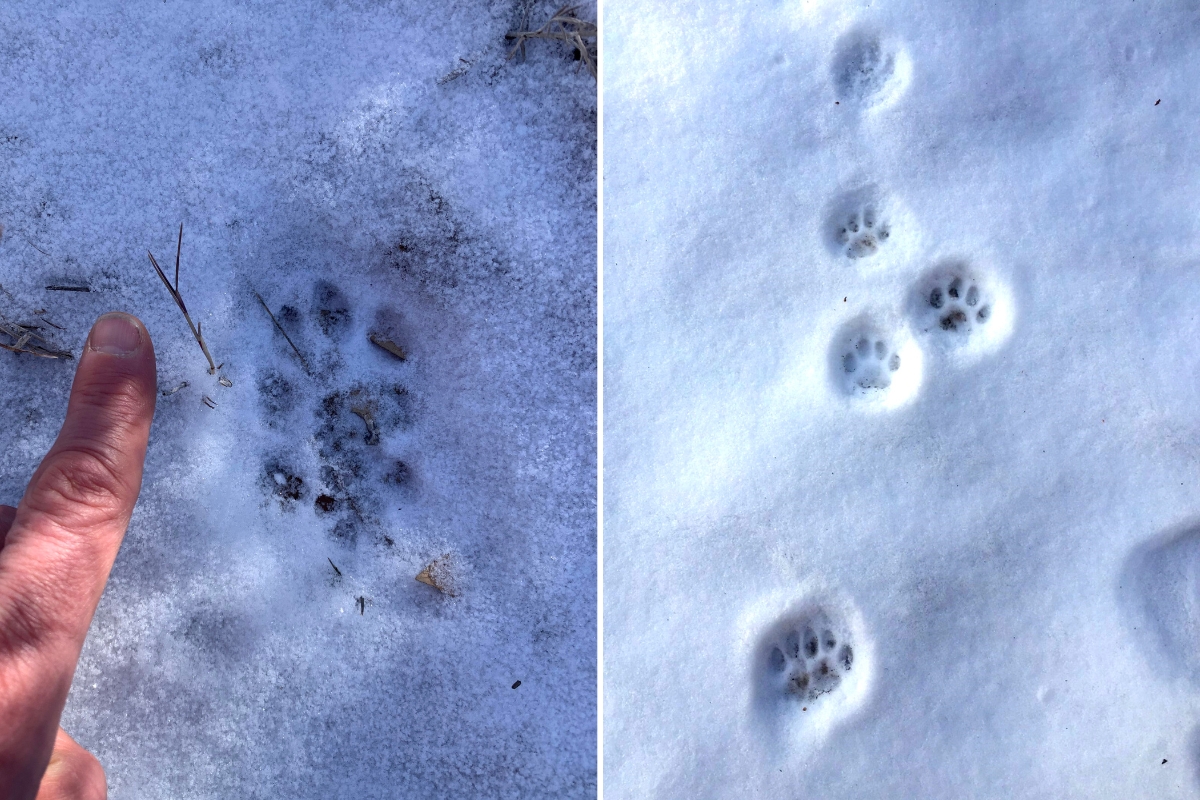
You should also investigate the bobcat poop if you find it in any area as it could be a good source of information for ultimately catching the cat. By bobcat poop, you can analyze their food source and the availability of this food in nearby areas.
Bobcats could be found in a variety of habitats but the most prominent where these cats are more likely to be present are rocky ledges. Try to find out the tracks and dens of bobcats in these areas. Rocky Pledges are ideal places for living as these places are high and also safe. At higher points, bobcats can easily read their surroundings and get to know what is coming toward them.
2. Set a trap
After tracking, now comes the time to set the best bobcat trap. In this regard, cage traps are the ideal choice as these traps don’t hurt animals and are also manageable for inexperienced trappers. It must have a treadle or pressure plate which slams the door once the bobcat makes its first step inside the cage. The cage trap is also ideal for relocating bobcats as these traps don’t hurt the cats. You may also use a rubber-jawed paw trap for this purpose which is also good enough.

Avoid lethal traps unless these are legally allowed to use in your state. These kinds of traps are considered cruel practices against animals and are also not suitable for inexperienced trappers. In extreme cases, you can utilize body grip or conibear traps. These traps kill the animals on spots without torturing them. Overall, the most recommended trap is the rubber-jawed paw trap which is the least harmful and you can catch the bobcat without hurting it.
Non-lethal traps are also beneficial as you may also catch some unintended animals like coyotes and foxes which are considered endangered in your areas, then you can release these animals without any harm. You must also always put the trap in the area where you are damn sure that only the bobcat will come. You should also remove the trap in the daytime as bobcats could only come in the nighttime. It is also necessary to use only fresh meat for baiting as bobcats would not come for spoiled meat.
It is also better to place the trap in the area which is the most suitable to lure a bobcat. The open end of the trap must be in the direction from where you can expect the bobcat could come. The closed end must be covered and placed against a hard object like a cliff, tree trunk, etc. You must also use a high-quality lure or bait for this purpose.
The floor of the trap must be the same as the soil in the surrounding area. You must put some soil on the floor of the trap from the surrounding area. It must give natural look and the bobcat must enter it without knocking it over. You could also use some other things like grass, dirt, sticks, or even rocks for covering up. The trap must also be triggered immediately as soon as the bobcat enters it.
For camouflaging from outside, you can cover it with big branches and also fill the remaining space with loose grass, stick, and leaves. You must try to hide only metal without covering its opening.
3. Baiting the trap

For the baiting purpose, you can use the aluminum foil as a lure by poking a hole in it and hanging it near the tree with a fishing wire. You can also utilize several lures at the same time for catching the same bobcat. Christmas tinsel also works very well in this regard. If you put pet cats as bait then big cats like bobcats could never resist it.
Try to put the lure near your cage as much as possible. You can utilize nearby trees for this purpose. You can grab the attention of the bobcat with the help of reflecting lights and flutters in the breeze. The baiting item must be near the cage but not over it as it is just for luring the bobcat into any particular area.
You may also use a piece of meat for baiting purposes. However, the piece of meat must have a very strong odor like comes from sardines or mackerel fish. If this kind of meat is not available then you may also put some hot dogs for luring the bobcats. The meat must be in raw form as bobcats don’t like to eat cooked meat.
The baiting piece must also be at the back end of the trap and the bobcat needs to pass the trigger for getting this piece of meat. Otherwise, the whole purpose of baiting the meat will not be successful.
You can also use the bobcat scent if you want to execute the trapping process more accurately and efficiently. In this regard, you can utilize the gland scent of the bobcat or even its urine. You must Spray it around the trap.
4. Trapping a bobcat

Now comes the final steps which you must take for making this setting ideal. First of all, you must cover your own tracks as this thing could be suspicious of the incoming bobcat. You must have quick look around the area and try to put things where these things were previously placed. The trap must be fully covered with the surrounding material as we have mentioned before. Try to cover your footprints with the dirt in the surrounding area. Put all the rocks in their proper places.
Check the trap every morning to see if any wild cat has been trapped or if the baiting material is in its place. You must have a check on the trap right after the time when bobcats come back to their dens for resting purposes. If there is no baiting material available in the trap, then restock it with fresh material. Keep checking the trap if it is good enough for this purpose or if there is a need to do anything other than this.
You must wait for at least 3 to 4 weeks after setting the trap. The traps are usually good enough for at least 3 weeks. Try to reset the trap if you don’t have anything after the passage of even 4 weeks. You may also replace the bait and re-scent the surrounding area if you still think the bobcats would come back. However, the trap must always be very well hidden and should not look very scary for the bobcat.
In the end, if you catch the bobcat in your trap, then you must immediately contact the local wildlife department. You may also call any animal sanctuary or professional animal service provider for dealing with wild cats. You must never approach bobcats on your own as these are very dangerous cats and could give you any harm. You can only deal with them if you are a little bit trained about them or if there is no other way.
Frequently asked questions
Conclusion
We have explained in detail how to trap a bobcat in a very successful manner. We have guided you in a very comprehensive manner about all the steps which you can take in this regard. These are the best or ideal steps for trapping or catching a bobcat if you deploy these steps in a very successful manner. Many individuals, private as well as government-level organizations have been utilizing these steps for catching or trapping bobcats by using these steps. If you have not been able to catch the bobcats by using this guide, you may also make some changes that are the most suitable for you.

Izzy is an experienced ranch worker who has a passion for exploring nature and getting up close to wildlife. With her connections to various animal organizations, Izzy is well-versed in animal care and rehabilitation.


